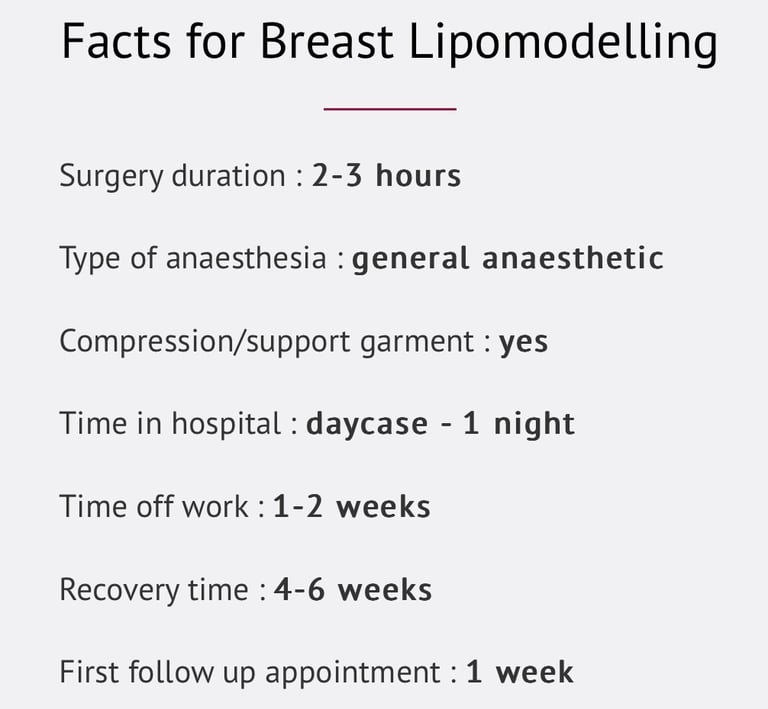Breast Lipomodelling
Breast Lipomodelling involves removing fat via liposuction from a number of areas of the body and injecting it into another part of the body, typically the breasts helping to involve the size and shape. It can also be used after breast reconstruction procedures.
Lipomodelling may also be called lipofilling or autologous fat grafting. Fat transfer can be an option for a range of procedures, including facelift, breast enhancement, and buttock augmentation.
Through a tiny incision, a narrow tube or cannula is inserted and used to carefully vacuum the fat layer that lies deep beneath the skin. The cannula is moved through the fat layer, breaking up the fat cells and suctioning them out by a vacuum pump or a large syringe. Once enough fat has been harvested, it is washed to purify it.
The harvested fat are injected in different layers of the breast. The injection technique is critical to achieve permanent survival of the new cells within the breast. Hence they are injected in fine, long threads and only a limited amount of fat can be injected at one operation. These newly injected cells can survive for up to 48 hours without being in direct contact with blood vessels to provide the oxygen and nutrition they need to survive. In the meantime new blood vessels need to form to supply their longer term needs. This process is strongly inhibited in smokers.
The process begins with a thorough consultation where the surgeon discusses the patient’s goals, evaluates their health, and explains the available options.
Recovery time varies, but many women can return to normal activities within a few weeks, while the final results may take several months to fully settle. As with any surgical procedure, it is essential to understand the risks, benefits, and potential complications associated with breast augmentation to make an informed decision.


